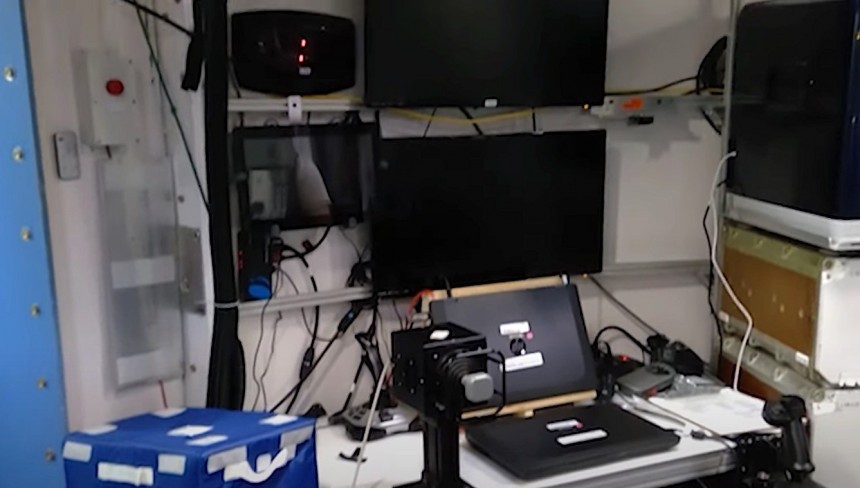If all goes well, we may witness our species’ first manned mission to Mars in our lifetime. NASA is actively planning for this, and even though the actual spacecraft and other equipment required for the mission are not yet operational, efforts are underway on an unprecedented scale to better understand what such a mission would entail.
These efforts include isolating a group of volunteers in a simulated Mars habitat located on Earth. It’s not something we humans haven’t done before, but NASA has just announced the expansion of its initial research into this area.
At NASA’s Johnson Space Center in Houston, Texas, there is a facility called the Human Exploration Research Simulation. Known simply as Hera, it’s a place unlike any other on the planet.
Physically, the facility is no larger than an average European apartment. It has an area of 60 m2 (650 sq ft) and the available space is divided into two floors, a mezzanine and a sanitary module.
A habitat is a closed environment, completely isolated from the surrounding environment, which is used as a tool “Conditions of isolation, confinement, and remoteness in exploration scenarios.” It’s a perfect replication, then, of the conditions that Mars explorers on earlier missions had to endure on their way to Mars or on the surface.
NASA first opened HERA for testing several years ago, but appears to have accelerated its use of the facility in recent years.
Photo: Hera
For example, in the four months since the beginning of this year, a team of volunteers has gone through the trials and tribulations of HERA. The four entered the habitat on January 26 and left the site on March 18.
Astronauts will need to perform multiple missions, including science and maintenance, while also trying to overcome the challenges of a deep-space mission to Mars and even the communications delays that real astronauts might experience. Most importantly, they conducted at least 18 human health studies during HERA.
NASA plans no fewer than four missions within the habitat this year, and the crew for the second mission has just been announced. Once again, four volunteers will enter HERA for 45 days of quarantine (or 45 days of astronaut life, if you put it all in perspective).
Team members include Jason Lee, resident associate professor in the UConn School of Mechanical, Aerospace and Manufacturing Engineering; Stephanie Navarro, a U.S. Air Force Reserve space operations officer; and commercial pilot Shareef Al Romaithi; and Piyumi Wijesekara, a research scientist at NASA’s Ames Research Center. Two other men, Jose Baca and Brandon Kent, were backup personnel for the mission.
Al Romaithi is a national of the United Arab Emirates (UAE) and his addition to the crew marks the first time in the HERA program that personnel from that country have been involved in such a mission.
Just like the previous crews, the new crew will have to perform scientific research and operational tasks. The menu also includes communication delays of up to five minutes each way, so researchers can see what this delay means for real-world missions.

Photo: NASA
But most importantly, this team of astronauts will also go beyond the surface of Mars. Sort of, since they won’t actually leave their habitat, and they’re certainly not on an alien planet, but they’ll be using virtual reality to do something that might soon be broadly dubbed a “walk on Mars.”
All four people will undergo the same set of 18 health studies. They include physiological, behavioral and psychological responses to such a challenging environment, because understanding how humans will cope with prolonged space travel and increased isolation on the ground is critical for mission planners.
Despite conducting several such simulation missions in recent years, NASA has yet to make any findings public.This may be because more research is needed on more diverse populations “Develop and test strategies designed to help astronauts overcome obstacles on long-duration missions deep into space.”
The second HERA mission in 2024 will end on June 24, and will be followed by two more.The last one of this year “Go to Mars” The role-playing game is expected to end on December 20th.
It’s worth noting that NASA is openly allowing people to sign up for a simulated HERA mission to Mars. Of course, there are some conditions that need to be met, but they only appear once you complete the process (the most important being that you need to be a U.S. citizen). So the only way you’ll know if you’re a good candidate for an astronaut is to click on this link and take it from there.
#NASA #locks #people #tells #astronauts #headed #Mars
Image Source : www.autoevolution.com
